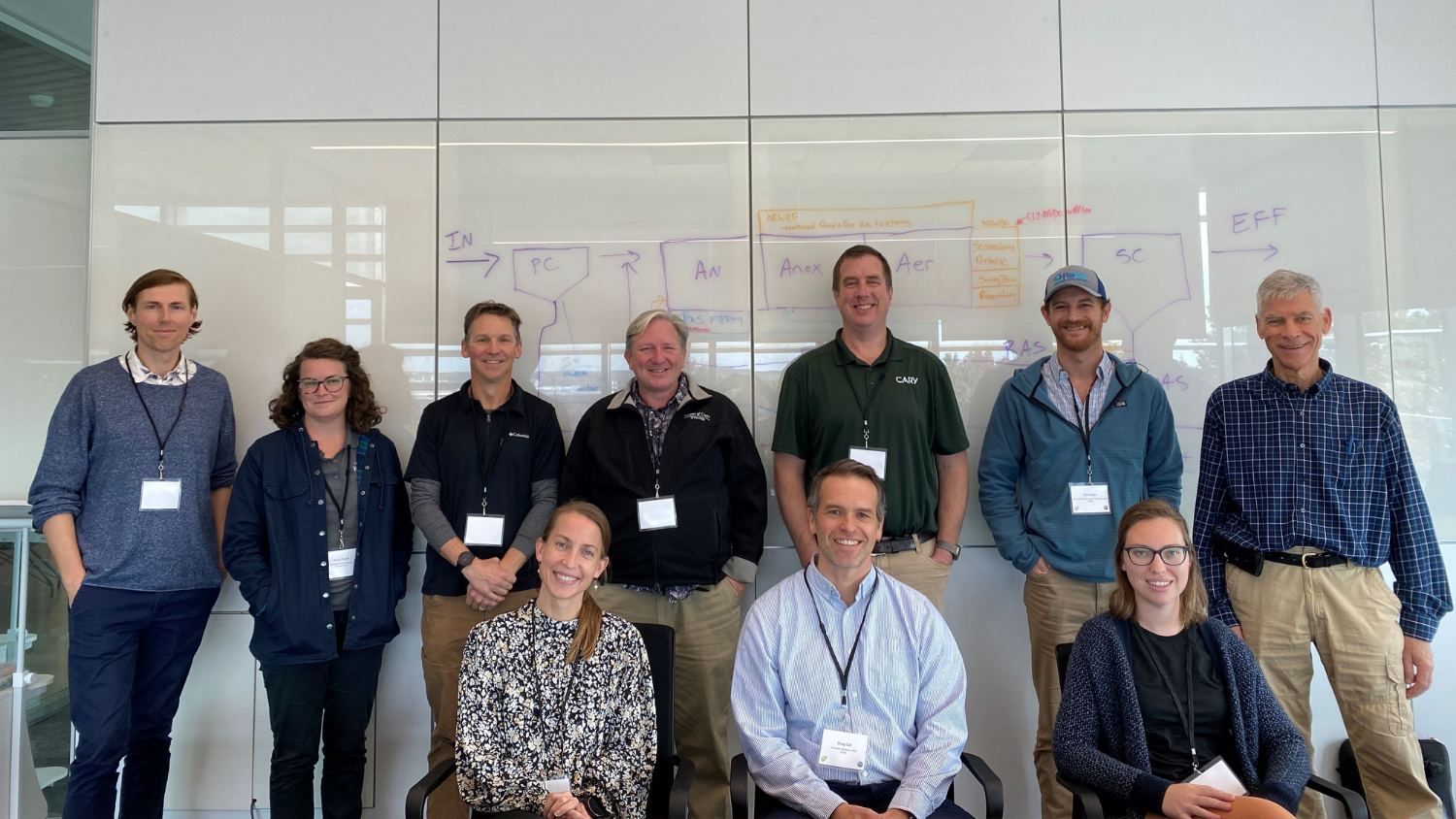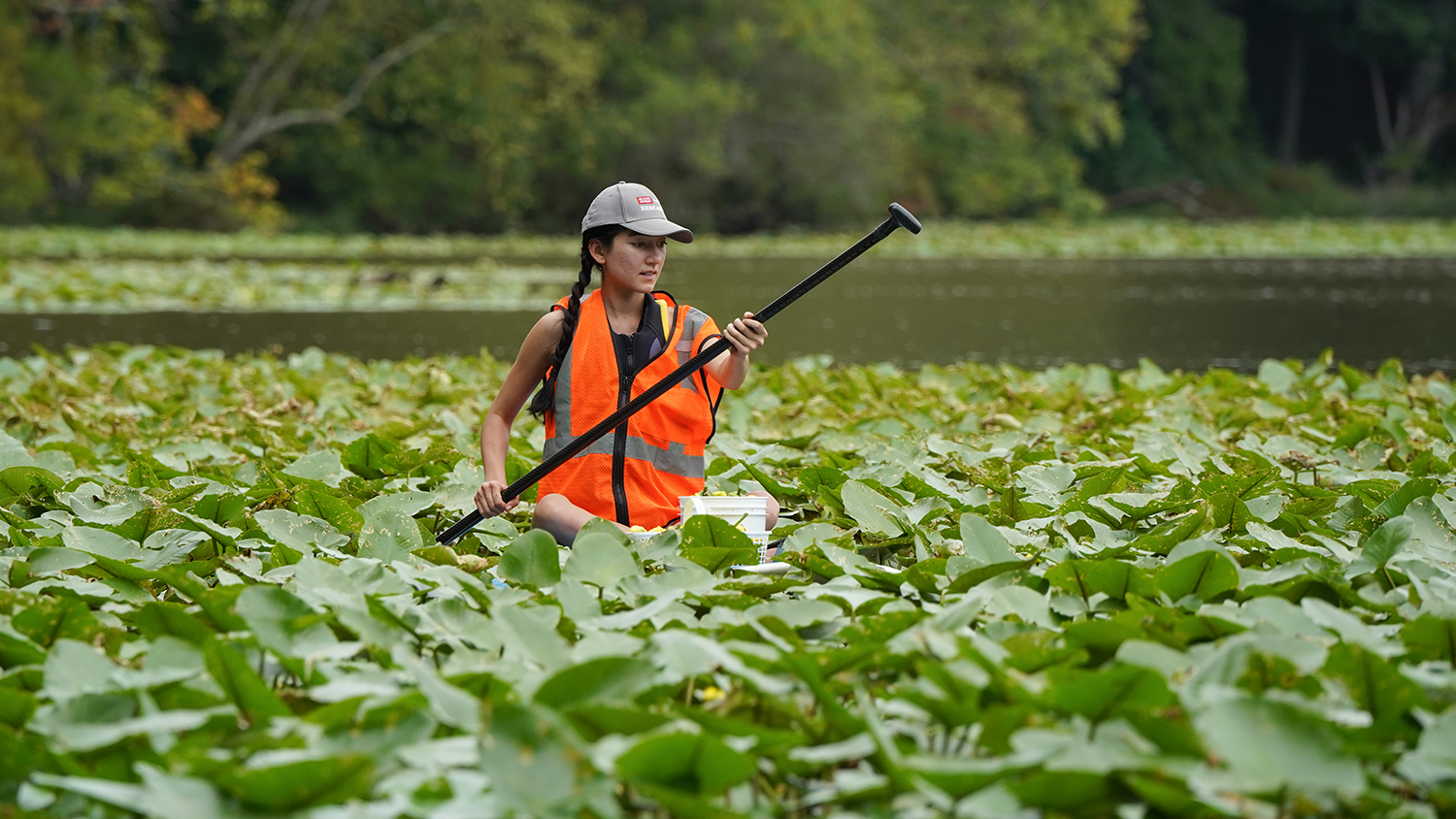Back from the Brink: NC State’s Key Role in Red Wolf Recovery
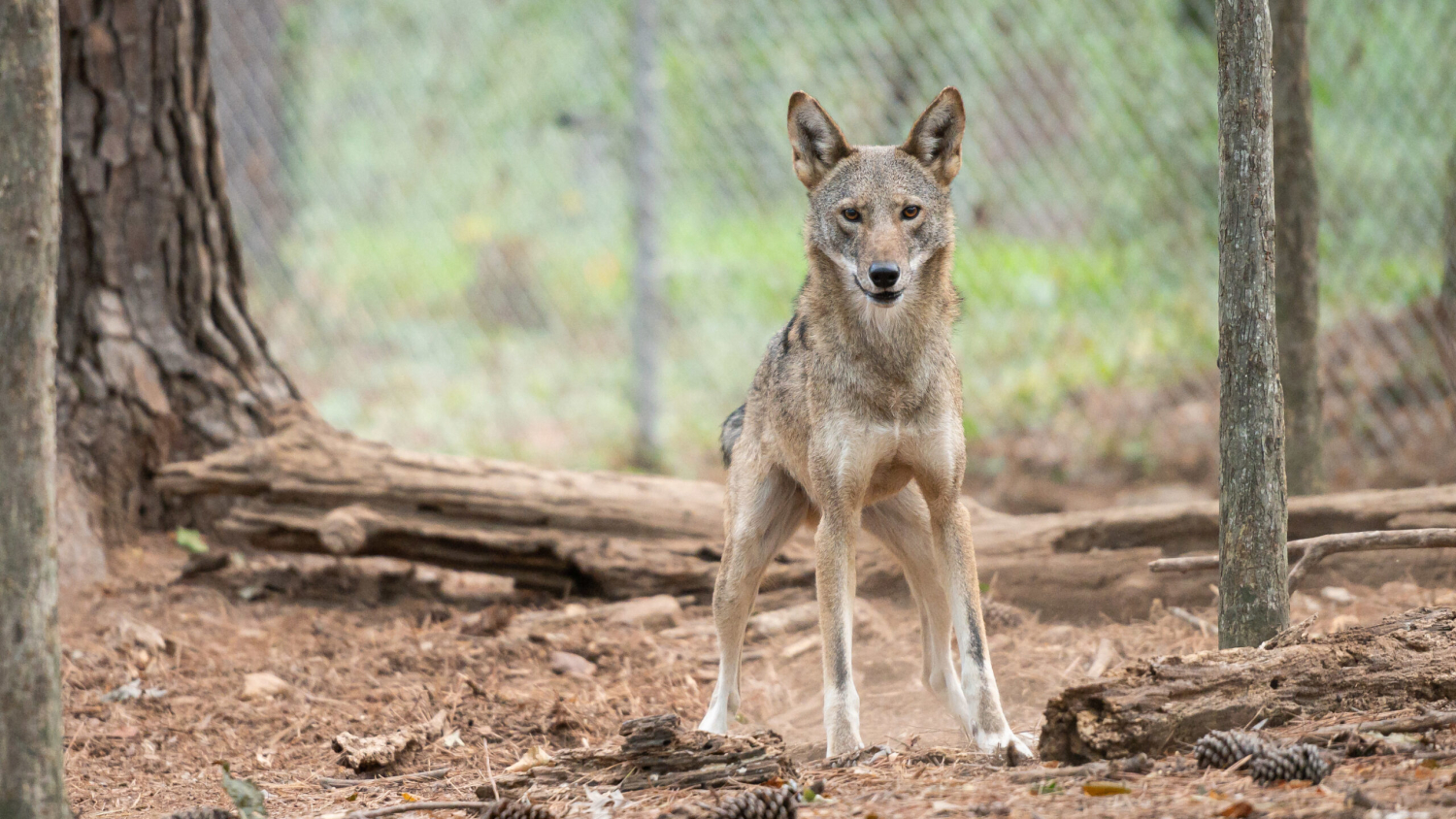
A kennel taking up much of the small exam room at the NC State College of Veterinary Medicine holds the patient as technicians, anesthetists, doctors and students crowd around, some sitting on the floor, waiting for the red wolf to wake.
The injured animal, one of fewer than 20 of the world’s most critically endangered canid species living in the wild, has just had X-rays on his hind legs to determine what damage a run-in with a trap might have done. The ankle isn’t broken, but it’s unstable, so surgery to insert a plate is scheduled for the next morning.
The exotic animal medical team will be ready. NC State, less than three hours away from the five coastal North Carolina counties where the last wild red wolves live, is always ready to support red wolf recovery.
Along with the U.S. Fish and Wildlife Service and the Association of Zoos and Aquariums Species Survival Plan, the College of Veterinary Medicine is integral to the nationwide effort to preserve and repopulate the species, which in 1980 was declared extinct in the wild.
But not in human care. In the 1970s, the wildlife service gathered 14 of the remaining animals and started a breeding and release program, which has led to the wild population in North Carolina. Currently, about 230 wolves are spread among 49 U.S. zoos and facilities as part of the program.
In North Carolina, the North Carolina Zoo in Asheboro, the Rowan Wild near Salisbury, the Western North Carolina Nature Center near Asheville and the Museum of Life and Science in Durham house and care for red wolves.
So does the NC State College of Veterinary Medicine in Raleigh.
Four red wolves currently populate the Wolfpack wolfpack. The patient, a released wolf whose orange tracking collar alerted the wildlife service to his distress, makes five.
“We’re not only making a difference today, we’re making a difference in the future.” – Tara Harrison, associate professor of zoo and exotic animal medicine
“NC State is uniquely positioned to have a lot of involvement in this conservation aspect,” says Tara Harrison, associate professor of zoo and exotic animal medicine at CVM. “We have all of the experts here. We not only provide expert medical care for the wild wolves and the zoo and museum wolves, but we’re also teaching future professionals how to carry on and do that work. We’re not only making a difference today, we’re making a difference in the future.”
Caring for wolves since 2001
The NC State College of Veterinary Medicine got its first wolves through the Species Survival Plan in 2001. Veterinary students in the Carnivore Conservation Crew tend to the animals on a day to day basis. Four pups have been born at the school over the years.
The crew said goodbye in December to two wolves, a breeding pair that had been at the college since 2019. The wolves joined seven others living in the wildlife service’s acclimation area on the coast awaiting release.
In March, Boca and Hemlock timidly went on their wild way, becoming the first NC State wolves to reach the major milestone.
“Every one of these releases is different as are the characteristics and traits of each of these individual red wolves,” says Joe Madison, manager for the U.S. Fish and Wildlife Service’s Red Wolf Recovery Program. “As a result, the release and subsequent events for each are unique. Once that acclimation pen has been opened, it is impossible to predict where they will go, what they will do and how well they will transition to the wild, but that is the beauty of them being free.”
“Once that acclimation pen has been opened, it is impossible to predict where they will go, what they will do and how well they will transition to the wild, but that is the beauty of them being free.” – Joe Madison, manager for the U.S. Fish and Wildlife Service’s Red Wolf Recovery Program
The release process begins in a fenced area on land closed to human presence. The animals then move to an even larger enclosed area where they are fitted with the monitoring collars and learn to hunt.
Madison, who has been running the recovery program five years, has overseen the release of 21 wolves. The memories of the first are still vivid.
“We prepared the pen for release while the red wolves were closed in their den box and, as the light was fading with sunset, we opened the den box and retreated,” he says. “We watched as the male took his first few steps into the wild in North Carolina in a field awash with thousands of yellow flowers. It was the first red wolf release during my tenure here and was very emotional.”
All of the wolves under human care are entrusted to the U.S. Fish and Wildlife through the Endangered Species Act. Because any of the wolves could be released into the wild at any moment, caretakers work hard not to train or tame the wolves, Harrison says.
“We want to make sure these animals are set up for success and that they have the best possible opportunity in the wild,” she says. “It’s not just ‘go release wolves into the wild.’ It’s not that easy. It involves a lot of time, money and collaboration.”
Among the four animals in NC State’s wolfpack, whose number has been as high as nine, is another breeding couple. Oak was born at NC State, but Niko came from a zoo in Washington State, thanks to the Species Survival Program’s computerized dating system.
Chris Lasher, animal management supervisor at the North Carolina Zoo, coordinates the Red Wolf Species Survival Captive Breeding Plan. Because all of the wolves now have descended from the same 14, putting genetically compatible couples together is critical to the program’s success.
“We also look at who has empty spaces and take into consideration a facility’s needs and wants,” Lasher says. “We look at the needs of every partner and fill the needs for the species to make sure we are maintaining a genetically diverse insurance population under human care as a stop gap to keep the species from going extinct.”
Each summer, after the breeding and birthing season, representatives of the red wolf facilities meet, look at the population as a whole and put pairs together based on genetic diversity. In 2021, 40 wolves, including Niko, got new homes.
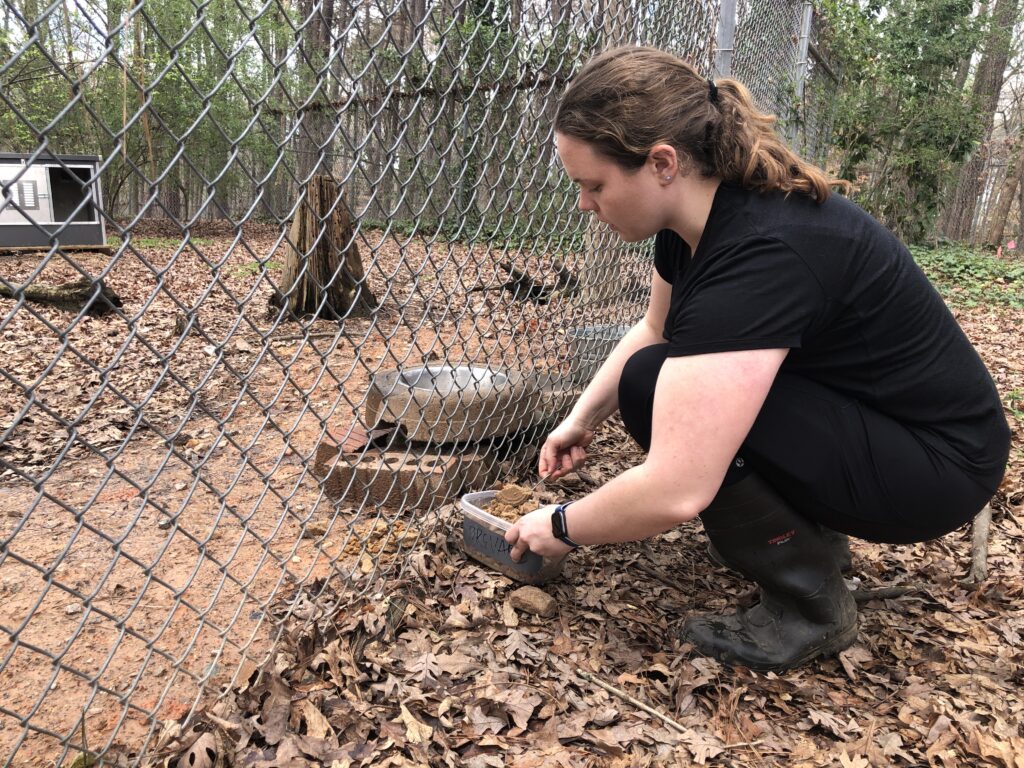
Annie Gorges, co-president of the CVM Carnivore Conservation Crew, was at Raleigh-Durham International Airport when Niko arrived from Point Defiance Zoo and Aquarium in Tacoma, Washington.
“I went to the airport and picked him up from the cargo area, and it was very funny explaining it to the workers there,” says Gorges, who has been caring for the wolves three years. “He and Oak are a very genetically important pair.”
The medical go-to team
At the NC State wolf pens, Gorges is handling the afternoon shift for the carnivore crew, whose members go out twice a day to feed, water and monitor Niko, Oak and her parents Boone and Brevard.
Today, Gorges also will be caring for the patient, which after his successful surgery has been brought to recuperate in an empty pen. Administering his medicines and feeding him the whole prey he now is used to eating will be added to the routine. The prey has come from the Museum of Life and Science, an important red wolf partner, to help supplement what the college keeps on hand for the wolves.
“With dogs or pets with a surgery like this, they would say cage rest, we want a cast on it, we want to inspect the wound every so often,” Gorges says. “With these guys, it is a bit of a compromise with what we would normally want because they’re not dogs, they’re not pets, and we can’t get in there even if we wanted to take a look at it. The stress of going in there and capturing him might aggravate his wound even more.”
It’s not the first time the College of Veterinary Medicine has provided medical care for an injured wolf.
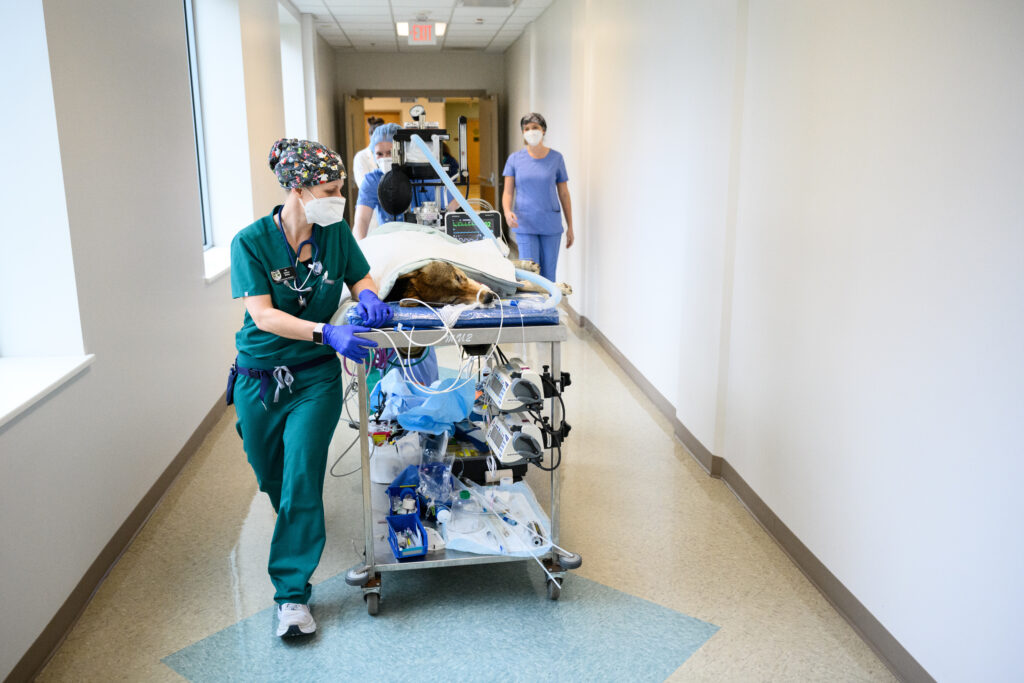
Last year, the CVM exotic animal medicine team treated another wild red wolf that had broken its foot in a trap. The wolf’s surgery and recuperation were successful.
“We are lucky to be able to help U.S. Fish and Wildlife,” Harrison says. “That wolf had broken her paw, and they brought her here, and with our awesome surgeons, great anesthesiologists, radiologists and all of the specialists that we have here as well as our carnivore crew members, we were able to fix her fractured foot, care for her during her hospitalization and stay here in one of our other enclosures and then re-release her back into the wild.”
A month later, college clinicians performed surgery on a young red wolf from the North Carolina Zoo that had a compound fracture in a front leg. The NC Zoo currently cares for 33 wolves, Lasher says, with only two on exhibit as ambassadors for the species.
“NC State is incredibly important to the program, not just as a holder of live red wolves and as someone who can assist with their medical care, but NC State has a history of helping with disease research and genetic issues as well,” Lasher says. “There have been a lot of genetic issues with a bottleneck of only 14 original wolves, and NC State has been incredibly important in eradicating some of that.”
Lasher pointed to a genetic eye disease that was leaving some wolves blind.
“Progressive Retinal Apathy showed up in the genetic research, and researchers at NC State found the genetic line that it was being passed along from,” Lasher says. “So, thanks to NC State, we’ve been able to eradicate that from the population.”
NC State also has played a critical role in determining the best methods to help the release program succeed. Dr. Michael Stoskopf, professor of wildlife and aquatic health, led the Red Wolf Recovery Implementation Team for many years after the wildlife service sought out scientific guidance for the recovery effort.
“The model has been copied since for other species,” Stoskopf says. “Our residents, DVM and graduate students working with wildlife service biologists have developed many of the management approaches that have been very successful, including having wild wolves foster captive-born pups and early tagging of pups in their dens. These were things ‘wolf experts’ did not think were possible.”
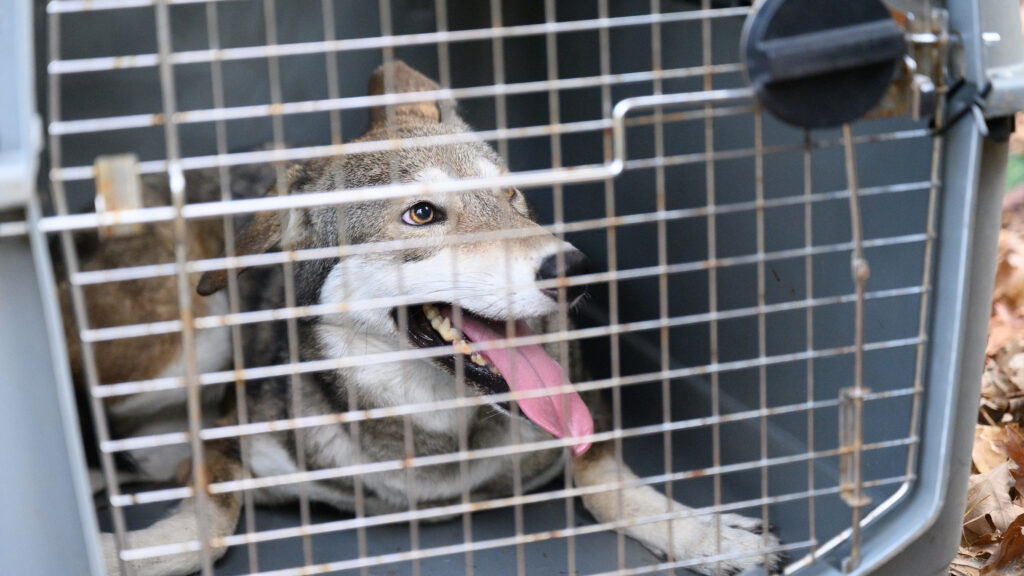
When the effort pays off
Gorges feels grateful that she has had the opportunity to work with the wolves. The fact that she is among very few veterinary students in the world who will experience caring for an endangered species and helping to repopulate it in the wild still leaves her in awe.
“Learning how to manage a critically endangered species from both the medical side and the husbandry side, making sure they are properly cared for and that they are thriving is just a joy,” she says. “Seeing that all of our effort of taking care of them twice a day every day and all of the work that goes into their medical care, the maintenance of the facilities, trying to make sure they’re enriched and exhibiting natural behaviors and thriving, all of that time, effort, money are going toward something meaningful and something that will benefit not only the species but the whole ecosystem of the North Carolina coast.”
If more red wolves roamed the Eastern Seaboard, their natural habitat, coyotes wouldn’t be the nuisance they are, Lasher says.
“The red wolf is a native species to North Carolina and the entire Southeast, and it’s an animal that belongs in our ecosystem,” he says. “Coyotes moved in because there’s a vacancy at the top of our ecosystem. We don’t have an apex predator in the Southeast anymore, and that has allowed the coyote to thrive.”
In about eight weeks, the current patient at NC State likely will return to his hunting along the North Carolina coast.
For now, Gorges adds him to the Carnivore Conservation Crew log, noting the medicines he needs and the amount of meat he should get so tomorrow’s crew member will know what to do.
“It’s a lot of communication and a lot of trusting our team,” Gorges says, “but everyone who is on the team is really passionate about it and dedicated and wants to help our own pack as well as the species as a whole.”
Earlier, when Gorges put food in the patient’s pen, he had sneaked over, limping on one shaved leg, snatched it and run.
“He’s ravenous, which is good,” she says.
Recovery is at hand.
Want to help support the CVM wolfpack? Please click here.
– Burgetta Eplin Wheeler / NC State Veterinary Medicine
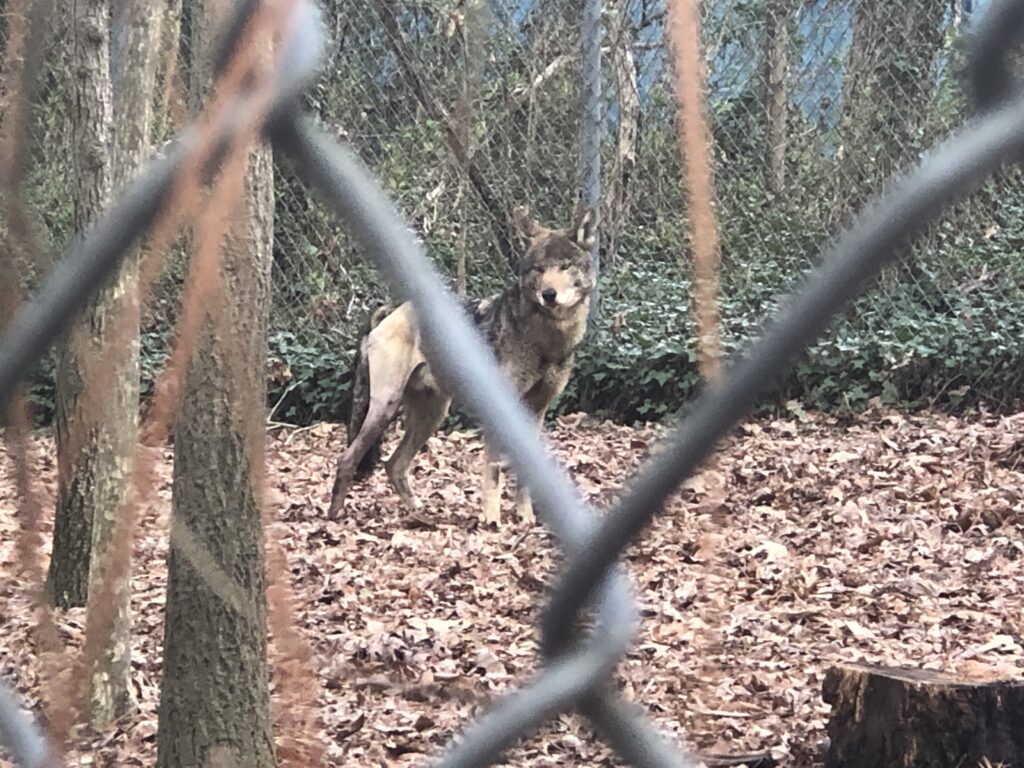
This post was originally published in Veterinary Medicine News.

